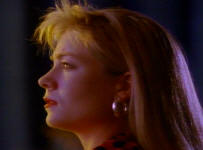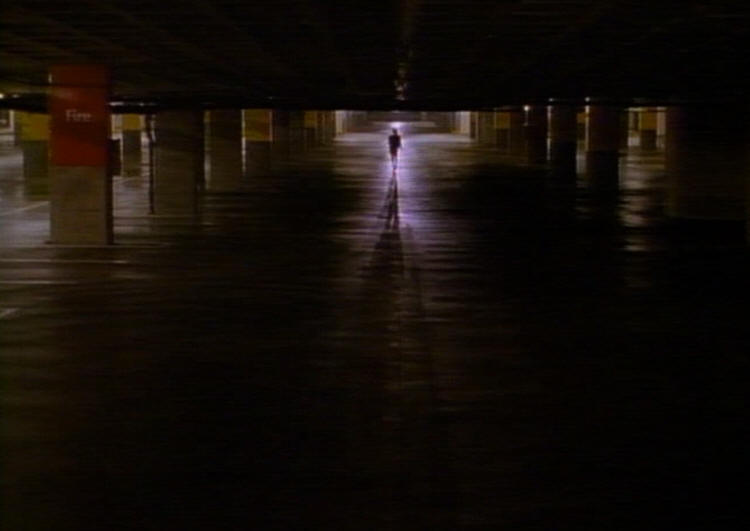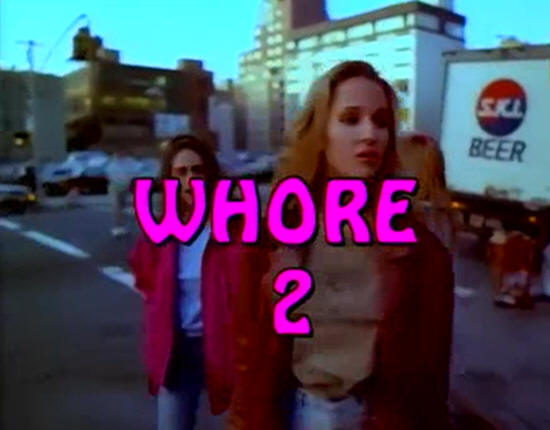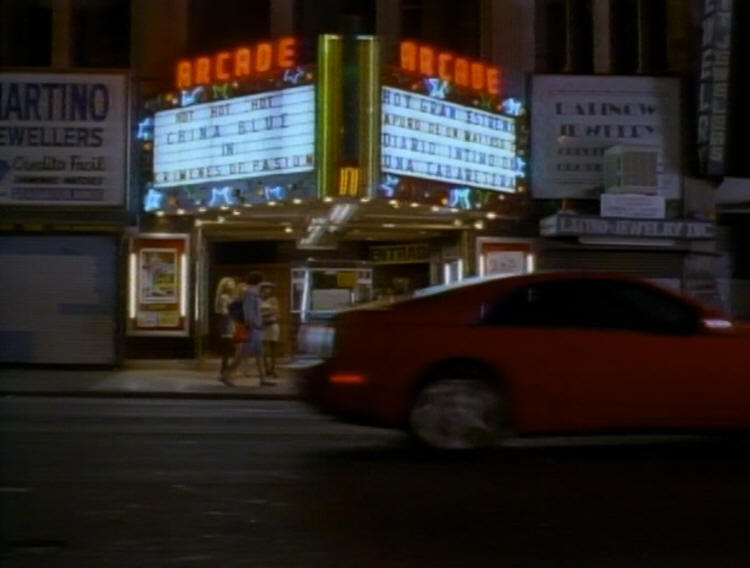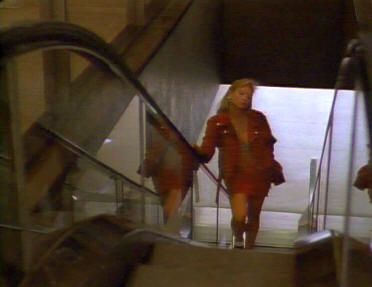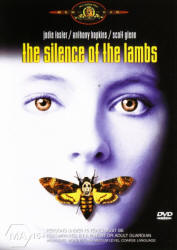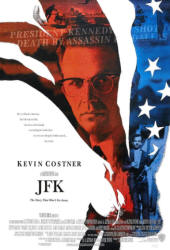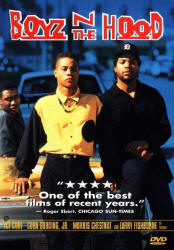|
Whore from 1991, a late gem by Ken Russell. Russell experiments with actress Theresa Russell (no relation) as whore Liz talking directly to the camera.
There are strong links to Crimes of Passion, and some scenes are repeats of the earlier film, but whereas Crimes of Passion looked at sexuality, Whore is another rite of passage film as the whore develops her independence. The mixture of whore and mother is also more convincing than China Blue's dual life in Crimes. Yvonne Tasker calls the film minimalist and continues "Here prostitution is offered as an explicit metaphor for class exploitation with an alliance between Russell's white prostitute, a white educated lesbian and 'Rasta' (Antonio Fargas) a black man who finally comes to her rescue. This stagy adaptation (much of it given over to Liz/Theresa Russell speaking directly to camera was marketed as 'sexy' film, but operates in quite other terms as a discourse on the 'working girl'" (Yvonne Tasker, Working Girls: Gender and Sexuality in Popular Cinema, Routledge, 1998, chapter 9). It is not a perfect film, the early scenes could be tightened up, and a couple of minor characters are annoying, but Theresa Russell's performance and Russell's imagery make it worth seeing . Ken Russell was surprised when I told him I rated the film, and he said critics savaged it- time kills critics. Although the film is Russell's third American film (Altered States and Crimes of Passion went before) it was originally set in Britain, based on a play by David Hines. The play, about a prostitute around the London King Cross area, was a monologue which led to Ken Russell's direct-to-camera approach which make it almost a one-woman film. I have unsuccessfully tried to find a copy of the play- any help appreciated.
Liz is sick of passing her money to her pimp (Benjamin Mouton), and the film develops through flashbacks including violence from clients as well as from the pimp.
She does find peace and happiness with friend Katie (Elizabeth Morehead) but the pimp finds them.
One reviewer has nothing good to say about the film "What is most depressing, given the hectoring tone of Liz's monologues, is the way the film comes alive when her hateful pimp usurps the voice-over to brag about his entrepreneurial skills" (NFMonday, Time Out, 10 Sept 2012, click here). Another prudish reviewer is distressed about
"costumes that leave little to the imagination and quite a lot to be
desired in the department of decency and good taste" - does she think
street prostitutes dress with decency and good taste? (Lola Borg,
Empire Magazine, 1 Jan 2000, click
here). A thoughtful reflection is "A fascinating movie with a startling central performance, it’s an adaptation of David Hines’ play Bondage, which itself was synthesized out of chats Hines, a taxi driver, had with prostitutes who took his cab after their late-night work. Russell and actress Deborah Dalton adapted Hines’ work for film, and transplanted the action to Los Angeles when Russell couldn’t get funding in Britain… The movie works because of how well it balances that grim reality with a playful irony… The pervasive irony in the film is a distancing effect, but it doesn’t blunt the harshness of what Liz tells us. As the movie goes on we recognize more and more of what she says about sex and life in general; when she tells us how pimps cultivate and then turn on the women they exploit, we recognize the techniques of abusers and manipulators" (Matthew Surridge, splicetoday, no date, click here), "Whore is… told without adornment or sentimentalism or any of the phony romantic myths that Hollywood likes to bring to the oldest profession. This is the real stuff. Now that millions of people have sniffled and applauded for Pretty Woman, perhaps some of them would find it interesting to see what life might really be like for a character like the one played by Julia Roberts... Ken Russell (no relation) has made “Whore” as the other side of his 1984 film “Crimes of Passion.”… Whore is not about a world where the heroine can do anything with her days except try to pull herself together after the night before... Her street knowledge is sad and wise. She used to like sex, until she realized most men bought her services not for pleasure, but in anger. She sees the hate in their eyes. She understands prostitution sometimes isn’t about sex at all, but about power" (Roger Ebert, October 18, 1991, click here).
The censored title is If You Can't Say It, Just See It. This was a version to be sold in malls and supermarkets. The new title is crudely placed over the original. It grossed over $1m in America.
All images from the film and the DVD cover of the alternative title.
There is a film Whore 2 from 1994 which despite the title has no connection with Ken Russell's film. Directed by Amos Kollek who interviews actual New York prostitutes and follows a fictional story. However despite talking to actual prostitutes the interviews all seem scripted and acted and there is little sympathy for any of the characters and little sense of how and why the prostitutes work and survive. "Undermining the film is the director's ponderous portrayal of Jack. Mr. Kollek, who has appeared in other films of his own, is a smotheringly dull screen presence who speaks in a droning monotone. Although the generalizations Jack draws about the prostitutes he meets may be correct, they have a tritely sentimental ring. Underneath their hard shells, he declares, they are really lost little girls" (Stephen Holden, 28 Jan 1994, New York Times). The reviewer gives the alternative title Bad Girls. The image is from the film. |


